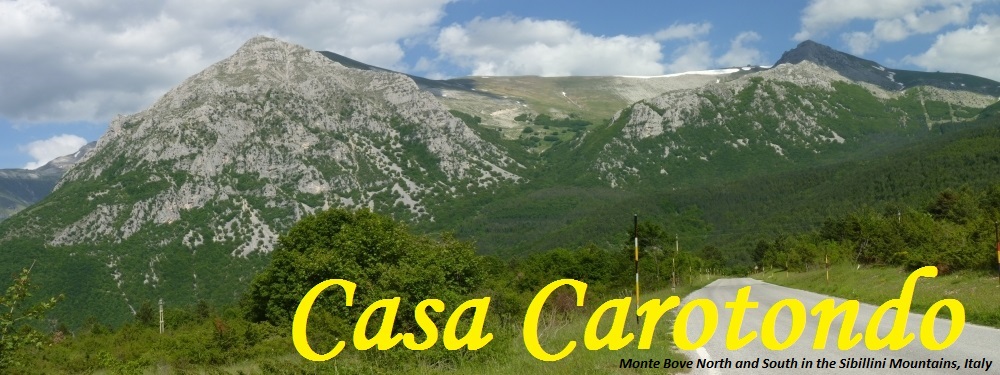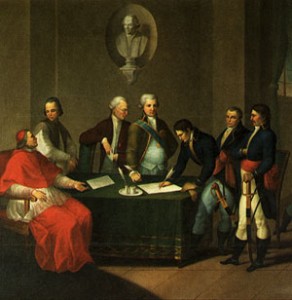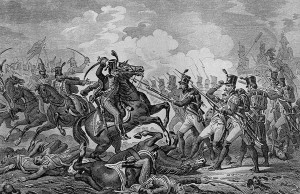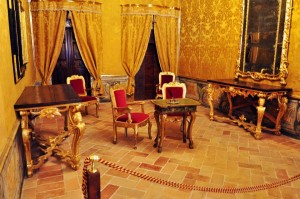It might seem strange to link Napoleon Bonaparte to the city of Tolentino, however Bonaparte touched the life of this city twice. As a young general Napoleon Bonaparte conducted the first Italian campaign successfully against the Austrians. As a result he eventually persuaded Pope Pius VI, who was aligned with the Austrians, to agree to a peace accord. The signing of this treaty took place in Tolentino on 19th. February 1797. As we all know from our history lessons Napoleon Bonaparte became Emperor of France but was eventually sent into exile on the island of Elba. On his escape from exile he waged war once more, losing his final battle at Waterloo in 1815. The Battle of Tolentino took place on 2nd and 3rd. May 1815. This battle is considered by some to have been the decisive factor in Wellington’s success at Waterloo on June 18th. 1815.
The first Italian campaign actually started when a number of European countries allied themselves to try to bring down revolutionary France. Napoleon Bonaparte was made head of the French army in Italy. Despite the dreadful state of the French army in Italy and against all the odds Bonaparte achieved great success. Having defeated the Austrians at the Battle of Mantua, at the Arcola Bridge and in the Battle of Rivoli, Napoleon had no more enemies in northern Italy and was able to devote himself to the Papal States. Following nine months of negotiations between France and the Papal States, in February 1797 9,000 French soldiers invaded the Papal Romagna Region, leaving the Pope no choice but to accept the French terms. Pope Pius VI was forced to renounce his treaty with Austria and hand over Avignon, Venosino, the legations of Bologna, Ferrara, Ravenna and Forli. He also had to surrender works of art and cash indemnities. The Peace Treaty of Tolentino was signed on 19th. February 1797 in the Palazzo Parisan Bezzi.
In 1804 Napoleon became Emperor of France. With the invasion of France in 1814 Napoleon was exiled to the island of Elba. He escaped from Elba in February 1815 to lead the French Government again and again faced war against a coalition of allied forces. In 1808, Marshal Joachim Murat had been appointed to the throne of Naples by Napoleon Bonaparte. He abandoned Bonaparte in 1813 after the defeat at Leipzig but decided to throw his lot in with him again, when pressure began to grow to restore the old King of Naples, Ferdinand IV. With this in mind, Murat elected to support Napoleon upon his return to France in early 1815. Moving quickly, he raised the Kingdom of Naples’ army and declared war on Austria on March 15. Murat had some early victories against the Austrians but eventually lost at the Battle of Tolentino.
The Battle of Tolentino, fought on 2 and 3 May 1815, was the decisive battle of the Neapolitan War. With their defeat at Tolentino, the Neapolitan army was no longer able to resist the Austrian advance under the command of Generals Bianchi and Neipperg through Italy and Murat was ultimately forced to flee to Corsica and returned to Paris. Napoleon, enraged by Murat’s actions and defeat, refused to receive him, and his offer to command the French cavalry was rejected. Not only did Murat’s actions and defeat at Tolentino mean that Austrian troops were now available for operations against France, it also meant that Napoleon was robbed of his best cavalry commander at the battle of Waterloo.
The Treaty of Tolentino was signed at the Palazzo Parisan Bezzi. The Palazzo is named after the two families who originally owned it. It was built in the seventeenth century, probably onto an older structure. On the facade on the top of a stone doorway there is an inscription commemorating the signing of the Peace Treaty between Napoleon and the Papal State in 1797. Ironically some years later, in 1815, General Federico Bianchi, commander of the Austrian troops, established his quarters at the Palazzo prior to fighting and defeating Gioacchino Murat, King of Naples, in the famous Battle of Tolentino near the Castle of La Rancia. The Palazzo is newly restored and conserves much of the original seventeenth century furniture, that Napoleon and Bianchi used during their stay there. There are also documents on show relating to the signing of the Treaty of Tolentino.




